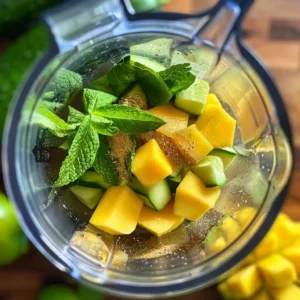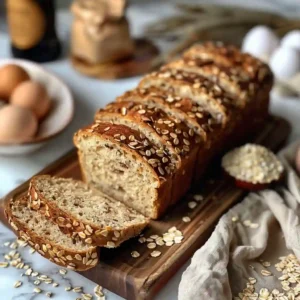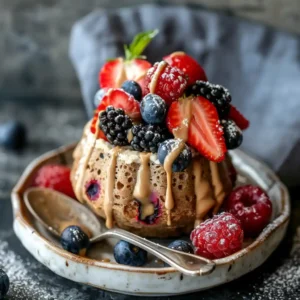Low histamine smoothie recipes have become a must-have in my kitchen ever since I started focusing on gut balance and avoiding food triggers. If you’re like me—dealing with unexplained bloating, fatigue, or allergic-like reactions—you might be facing histamine intolerance without even knowing it. And let’s be honest: finding something refreshing, nutritious, and truly low in histamine isn’t always easy.
That’s exactly why I turned to smoothies.
But not just any blend will do. A well-crafted low histamine smoothie can be a game-changer when it comes to reducing symptoms and fueling your body the right way. Over time, I discovered how much the ingredients—and how you prepare them—can impact your energy, digestion, and mood after every sip.
In this guide, I’ll walk you through everything I’ve learned about making low histamine smoothies that actually taste good and support your gut and hormone balance. We’ll cover the safest fruits, clean proteins, liquid bases, and even creative add-ins—all built around ingredients less likely to trigger a histamine response.
Whether you’re managing histamine intolerance, just starting to explore, or looking for new health-friendly options, this guide is for you.
👉 Related: Low Histamine Desserts for Hormone Balance – for sweet, gut-friendly treats beyond smoothies.
Let’s dive into Part 1 and explore what histamine intolerance really means—so you can start tuning in to what your body may be trying to tell you.
What is a low histamine smoothie?
A low histamine smoothie is a blended drink made with fresh, non-aged ingredients that are unlikely to trigger histamine reactions. It typically includes peeled fruits, homemade non-dairy milk, and clean proteins like collagen or seed milk—making it ideal for people managing histamine intolerance.
Table of Contents
Understanding Histamine Intolerance and Smoothies
What Is Histamine Intolerance?
Histamine intolerance isn’t technically an allergy, but it sure feels like one. I first realized something was wrong when I began experiencing rashes, headaches, and digestive discomfort after eating certain meals. As it turns out, histamine is a naturally occurring compound found in many foods—and produced by your body too. But if your body can’t break it down efficiently—often due to a deficiency in the enzyme diamine oxidase (DAO)—histamine builds up and symptoms begin to stack.
Common high-histamine foods include aged cheese, wine, vinegar, processed meats, and even some “healthy” staples like spinach, avocados, and bananas. That’s where smoothies came in for me. With the right ingredients, a low histamine smoothie became a simple and safe way to fuel my body without triggering symptoms.
Why Choose a Low Histamine Smoothie?
Let’s be honest—most grab-and-go smoothies are packed with high-histamine or histamine-liberating ingredients like strawberries, yogurt, or whey protein. Once I switched to a clean, low histamine smoothie routine, everything changed. My energy improved, inflammation went down, and those mysterious symptoms started to fade.
A good low histamine smoothie is:
- Easy to digest
- Packed with vitamins and antioxidants
- Naturally anti-inflammatory
- Quick to prepare
- Gentle on your gut
💡 If you’re also looking for simple low histamine dressings to pair with anti-inflammatory meals, check out this Low Histamine Salad Dressing Guide.
In the next part, I’ll show you the best fruits to include that are typically low in histamine and less likely to cause a flare-up.
Best Low Histamine Fruits for Smoothies
Top Low Histamine Fruits That Work for Smoothies
When I started blending smoothies that wouldn’t send my body into chaos, I had to rethink fruit altogether. Not all fruits are safe—some like citrus, bananas, and strawberries are histamine triggers for many people. But thankfully, there are still plenty of naturally sweet, low histamine fruits that work beautifully in a low histamine smoothie.
👉 Here are some of the best low histamine fruits for smoothies:
- Peeled green apples
- Ripe but firm pears
- Fresh blueberries
- Fresh-cut watermelon
- Small amounts of mango (only when very fresh)
❌ Avoid high histamine or liberating fruits like bananas, citrus, and strawberries.
Each of these has helped me build a smoothie that feels refreshing, nourishing, and safe.
✅ Frozen vs. Fresh Fruit: What’s Safe?
This was a game-changer for me. Frozen fruit often increases histamine levels because histamine builds as food sits, especially during freezing and thawing. I’ve learned to use only fresh fruit—or freeze my own immediately after purchase.
Tips:
Try one fruit at a time to track your body’s reaction.
Buy fresh fruit and freeze it the same day at home.
Avoid store-bought frozen blends, especially those with berries or banana.
🍞 Want more low histamine staples beyond fruit? Explore this Low Histamine Bread Recipe for a safe, satisfying option that pairs well with smoothies.
How to Make a Low Histamine Smoothie (Step-by-Step)
When I first started experimenting with low histamine smoothies, I knew I needed a formula that was both safe and repeatable. Over time, I developed a flexible method that keeps my symptoms in check while giving me the energy and comfort I need.
Here’s the exact smoothie blueprint I use daily:
✅ Step-by-Step Low Histamine Smoothie Formula
1. Start with a base liquid (1 cup):
Use filtered water, homemade coconut milk, or cucumber juice. These are clean, hydrating, and unlikely to cause a reaction.
2. Add fresh low histamine fruit (1–2 servings):
Peeled green apples, firm pears, or a handful of fresh blueberries work well. Mango can be added occasionally, but only when very fresh.
3. Choose your protein (1 scoop or 2–3 tbsp):
I use hydrolyzed collagen peptides or homemade pumpkin seed milk. Both are gentle on the gut and histamine-safe.
🥣 Want to add more plant protein to your day without powders? Try these High Protein Chia Recipes (No Powder Needed).
4. Add a fiber boost (optional):
Try 1 tsp freshly ground chia seeds or a spoonful of cooked quinoa flakes to support digestion and fullness.
5. Include safe extras (if tolerated):
Fresh mint leaves or a small piece of peeled ginger can add flavor without triggering symptoms.
6. Blend and drink immediately:
Always drink your smoothie fresh—never store it. Histamine builds fast, even in the fridge.
🛠️ Tips for Customizing Safely
When I want to try something new without risking a flare-up, I follow these personal guidelines:
- Introduce one new ingredient at a time to monitor your body’s response.
- Peel fruits like apples and pears to reduce irritants and fiber overload.
- Avoid citrus, bananas, and most berries, which are common histamine triggers.
- Skip protein powders with additives or “natural flavors.” Even clean-sounding ingredients can be sneaky triggers.
Coming up next, I’ll share nutrient boosters and gentle add-ins I use to take my smoothies to the next level—without compromising histamine safety.
Safe Protein and Liquid Bases for Low Histamine Smoothies
What Protein Powders Are Low Histamine?
When I first tried adding protein to my smoothies, I quickly learned that many powders—especially whey and fermented blends—only made my symptoms worse. After a lot of trial and error, I found clean, low histamine options that gave me energy without the flare-ups.
👉 Here are the protein sources that work best in my low histamine smoothies:
- Hydrolyzed collagen peptides – Tasteless, simple, and highly tolerable.
- Hemp protein (non-fermented) – Mild and earthy; look for additive-free versions.
- Rice protein isolate – Gentle on digestion and less reactive.
- Homemade seed milks – Blend soaked pumpkin or hemp seeds with water for a creamy, clean protein boost.
⚠️ Tip: Always read the label. Even “clean” protein powders can hide gums, flavors, or sweeteners that act as histamine triggers.
🌿 Looking for a full-body, plant-forward approach? Try these Ayurvedic High Protein Recipes that support digestion and balance.
Best Liquid Bases That Won’t Trigger a Reaction
Not all plant milks are created equal. I avoid store-bought almond, oat, and dairy milks, which often contain stabilizers or sit on shelves too long—raising histamine risk. Here’s what works in my kitchen:
- Filtered water – Pure and reliable.
- Homemade coconut milk – Blend coconut flakes with water and strain.
- Fresh seed milk – Use pumpkin or hemp seeds for a smooth, protein-rich base.
- Cucumber or pear juice – Naturally hydrating and low in histamine.
🥛 How to Make Seed Milk from Scratch
One of my favorite bases is homemade pumpkin seed milk. It’s simple and soothing.
- Soak 2 tbsp pumpkin seeds overnight.
- Rinse, then blend with 1 cup filtered water.
- Strain through a nut milk bag.
- Use right away or store up to 24 hours in the fridge (airtight).
In the next section, I’ll walk you through how to build an entire low histamine smoothie—step by step—with easy ways to mix flavors and stay flare-up free.
🔹 Best Protein Options for Low Histamine Smoothies
| Protein Type | Histamine Tolerance | Notes |
|---|---|---|
| Hydrolyzed Collagen Peptides | ✅ Very High | Neutral flavor, clean, gut-friendly |
| Rice Protein Isolate | ✅ High | Choose single-ingredient, unflavored only |
| Homemade Seed Milk | ✅ High | Use pumpkin or hemp seeds, freshly made |
| Hemp Protein (non-fermented) | ⚠️ Medium | May be tolerated if additive-free |
| Pea Protein | ❌ Low | Often fermented or processed |
| Whey Protein | ❌ Very Low | Common histamine trigger |
Nutrient Boosters and Safe Add-Ins for Low Histamine Smoothies
Gentle Add-Ins That Support Your Body
Once I nailed the basics of a low histamine smoothie, I wanted to boost nutrition without triggering symptoms. That’s when I started cautiously experimenting with ingredients known to support digestion, inflammation, and energy levels.
👉 Here are my go-to, body-friendly add-ins:
- Fresh ginger (small piece, peeled) – Adds zing and may support digestion.
- Fresh turmeric root (very small piece) – Anti-inflammatory; use only if tolerated.
- MCT oil (1 tsp) – Great for clean energy and absorbing fat-soluble nutrients.
- Fresh basil or mint leaves – Flavorful and gentle on the gut.
- Raw, peeled zucchini – Adds creaminess without affecting taste or texture.
I learned to skip so-called “superfoods” like cocoa, cinnamon, flax, and spirulina—they triggered reactions for me every time.
🥣 Curious about other soothing, anti-inflammatory blends? Try this Miso Chia Pudding that’s gut-friendly and flavor-packed.
Supplements and Powders to Avoid in Smoothies
I used to toss in greens powders, probiotics, and maca root thinking I was doing myself a favor—but they often backfired. Most of these are fermented, aged, or packed with hidden triggers.
🚫 Now I avoid:
- Fermented protein powders
- Green superfood blends
- Pre-made fiber mixes
- Whey, casein, and soy protein
- Citrus-based vitamin C powders
When I do need supplemental support, I stick to capsule forms taken separately—away from meals and under guidance. Keeping my smoothie simple has made all the difference.
Next up, I’ll share the exact low histamine smoothie recipes I use every week—all built using the principles we’ve covered so far.
Low Histamine Smoothie Recipes I Make Weekly
These are the smoothie recipes I rely on regularly. Each one is designed to be gentle on your gut, low in histamine, and simple to make with ingredients you can trust.
🥒 Daily Green Apple & Ginger Smoothie
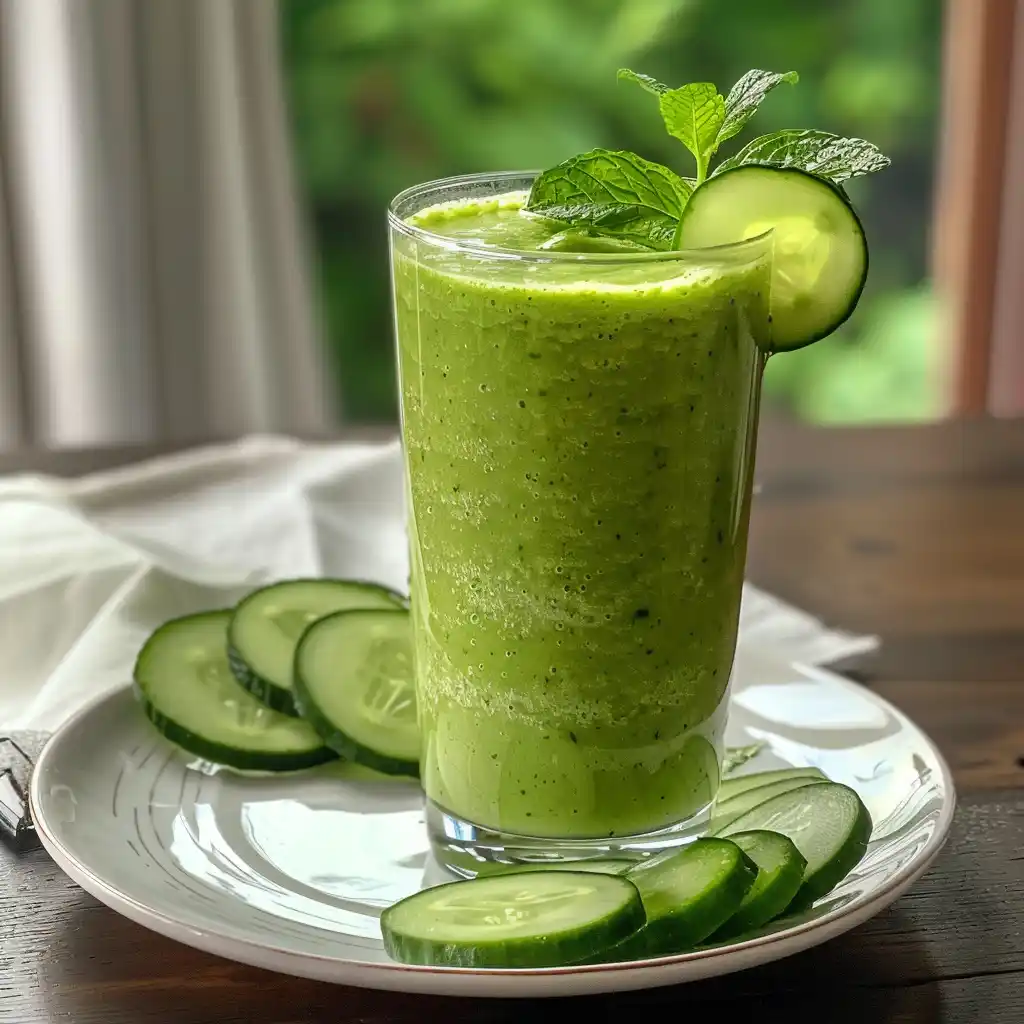
This one’s a lifesaver when I need something refreshing but not too sweet. It’s light, anti-inflammatory, and energizing—without any crash.
Ingredients:
- 1 cup filtered water or cucumber juice
- 1 small green apple (peeled and cored)
- 1/4 zucchini (peeled)
- 1 scoop hydrolyzed collagen
- Small piece of peeled fresh ginger
- A few fresh mint leaves
- Optional: 1 tsp MCT oil
Instructions:
Blend until smooth and drink immediately. Don’t store it—histamine builds quickly, even in the fridge.
🫐 Blueberry Pear Smoothie with Seed Milk
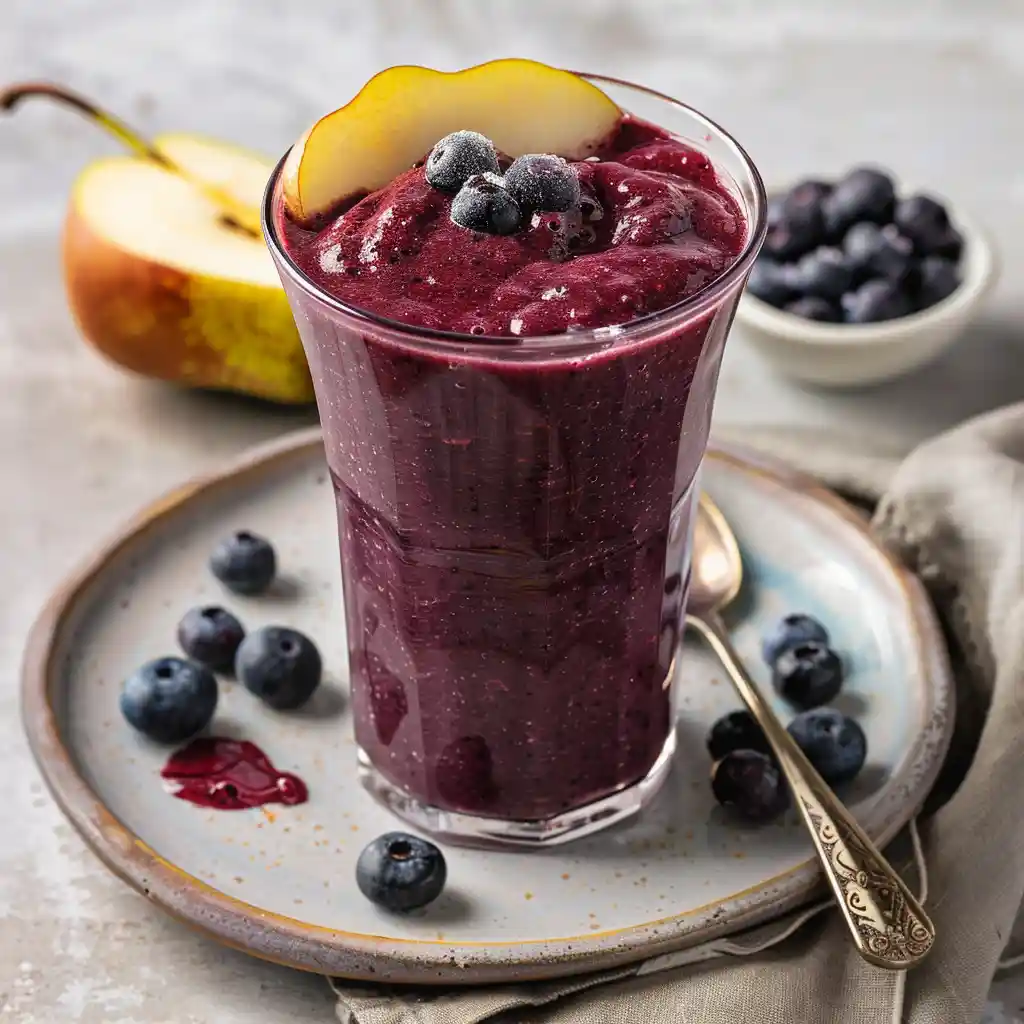
This one feels like dessert but is gentle enough even on flare-up days. Creamy, subtly sweet, and antioxidant-rich.
Ingredients:
- 1 cup homemade pumpkin seed milk
- 1/2 cup fresh blueberries
- 1/2 ripe pear (peeled)
- 1 scoop rice protein isolate or hydrolyzed collagen
- 1 tsp freshly ground chia seeds
- Optional: 1 tsp raw honey (if tolerated)
Instructions:
Blend on high until creamy. I usually enjoy this as a mid-morning snack or light lunch.
🥄 Want more gut-soothing, protein-packed breakfast ideas? Try this Cottage Cheese Chia Pudding that’s gentle and satisfying.
🥭 Creamy Mango Mint Smoothie (Occasional Treat)
Print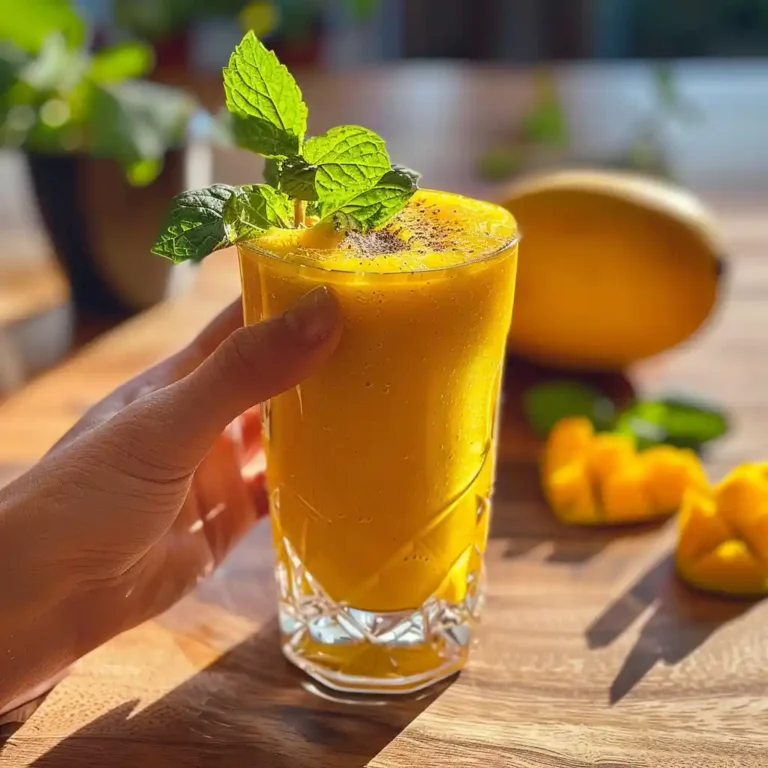
Low Histamine Smoothie Recipes (Fresh, Safe & Protein-Packed)
I only make this when I have a super fresh, firm mango and my body’s feeling strong. It’s a rare treat—but worth it.
- Total Time: 5 minutes
- Yield: 1 smoothie
Ingredients
- 1/2 cup homemade coconut milk
- 1/4 cup peeled fresh mango
- 1/2 small zucchini (peeled)
- 1 scoop hydrolyzed collagen
- A few fresh mint leaves
- 1/2 cup filtered water
Instructions
- Add all ingredients to a blender.
- Blend until smooth and creamy.
- Serve immediately and enjoy fresh.
Notes
Use only the freshest mango and don’t skip the mint—it’s what makes it sing.
- Prep Time: 5 minutes
- Cook Time: 0 minutes
- Category: Occasional Treat
- Method: Blended
- Cuisine: Fusion
I only make this when I have a super fresh, firm mango and my body’s feeling strong. It’s a rare treat—but worth it.
Ingredients:
- 1/2 cup homemade coconut milk
- 1/4 cup peeled fresh mango
- 1/2 small zucchini (peeled)
- 1 scoop hydrolyzed collagen
- A few fresh mint leaves
- 1/2 cup filtered water
Instructions:
Blend thoroughly and drink immediately. I skip this one if I’m feeling extra sensitive.
Common Mistakes to Avoid with Low Histamine Smoothies
Even the cleanest low histamine ingredients can cause problems if they’re used or stored the wrong way. Here are some common mistakes I made early on—and how to avoid them for better results.
❌ Mistake 1: Using Store-Bought Frozen Fruit
I used to rely on pre-packaged frozen fruit for convenience—until I realized most commercial brands freeze overripe produce long after harvest. The result? High histamine buildup.
✅ Better Choice:
Use fresh fruit or home-frozen fruit that’s prepared and sealed the same day you buy it.
❌ Mistake 2: Leaving Smoothies in the Fridge
I used to batch prep smoothies to save time. But histamine accumulates even in the fridge, and every time I drank one the next day, I didn’t feel right.
✅ Better Habit:
Drink your smoothie right after blending. If absolutely necessary, store in a vacuum-sealed jar and consume within 2 hours.
❌ Mistake 3: Overcomplicating the Blend
It’s tempting to pack a smoothie with 10+ ingredients for “maximum nutrition”—but this makes it hard to trace what’s triggering symptoms.
✅ Rule I Follow:
Stick to 5 ingredients or fewer, and introduce one new ingredient at a time so you can track how your body reacts.
❌ Mistake 4: Using Histamine-Liberating Additives
Some ingredients don’t contain much histamine themselves—but they stimulate your body to release more. That includes citrus, vinegar, cacao, nuts, and many probiotic blends.
✅ Safer Approach:
Start with a clean, neutral base and only add ingredients you’ve already tolerated well.
🍦 Looking for a histamine-friendly frozen treat? Try this Kodiak Protein Ice Cream—packed with protein, not additives.
Best Times and Ways to Drink Low Histamine Smoothies
⏰ When to Drink a Low Histamine Smoothie
After lots of trial and error, I’ve learned that timing matters just as much as ingredients when managing histamine intolerance. Even a perfect smoothie can cause discomfort if you drink it at the wrong time or alongside other histamine-rich foods.
🕒 Here’s what works best for me:
- First thing in the morning
Light and gentle on the stomach—especially after fasting overnight. - Mid-morning or between meals
When digestion is calm and there’s no food competing in your system. - After a walk or light movement
Physical activity stimulates the digestive process without overwhelming it.
🌄 Prefer a solid breakfast some mornings? Try this Cottage Cheese Chia Pudding for a protein-rich, gut-soothing option.
🥄 How to Drink It for Better Tolerance
You’d think smoothies are the ultimate grab-and-go meal—but histamine issues taught me to slow down and sip with intention.
✅ Tips for better digestion and fewer symptoms:
- Sip slowly—don’t chug it down.
- Use a spoon to slow your pace and aid mindful eating.
- Avoid pairing with leftovers or high histamine foods.
- Never store it—always drink it fresh.
💡 One trick I love:
Take a few sips, wait 10–15 minutes, and check how your body responds before finishing. That small pause can reveal a lot.
Coming up next, I’ll answer some of the most common questions I hear about low histamine smoothies—and share the tips that made the biggest difference for me.
Frequently Asked Questions About Low Histamine Smoothies
❓ What protein shakes are low in histamine?
The best low histamine protein shakes use hydrolyzed collagen peptides, rice protein isolate, or homemade seed milks. These are clean, additive-free, and less likely to cause reactions. Avoid whey, pea, or soy proteins, which often trigger symptoms.
❓ Which frozen fruits are low histamine?
Some low histamine fruits like pears or blueberries can be frozen, but only if done at home right after purchase. Store-bought frozen blends often contain high-histamine fruits or additives. Fresh or home-frozen is safest.
❓ What fruit lowers histamine?
Safe drinks for histamine intolerance include filtered water, homemade seed or coconut milk, and fresh cucumber or pear juice. Avoid kombucha, tea blends, aged drinks, and anything carbonated. Simpler is safer.
❓What can I drink with histamine intolerance?
I’ve built a short list of drinks I trust. These include:
- Filtered water
- Homemade seed or coconut milk
- Low histamine smoothies
- Fresh cucumber or pear juice
I stay away from kombucha, tea blends, and anything carbonated or aged. My motto? Keep it clean, simple, and freshly made. When in doubt, plain filtered water never fails me.
Next, I’ll wrap everything up with a few final tips—and share where you can follow my daily smoothie journey and healthy eating hacks.
Conclusion: Making Low Histamine Smoothies a Safe Daily Ritual
Creating a low histamine smoothie routine changed everything for me. I went from feeling reactive and foggy to finally having a go-to breakfast or snack that supports my energy and gut. These smoothies aren’t just about avoiding flare-ups—they’re about reclaiming comfort and control.
The secret? Keep it simple. Use fresh, low histamine ingredients. Test new items slowly. And always, always drink it fresh.
If you’re just starting out, try one of my beginner-friendly blends like the Blueberry Pear Smoothie, then customize as you learn how your body reacts.
For more ideas, follow my kitchen experiments and daily smoothie prep on
Facebook: https://web.facebook.com/profile.php?id=61566412694717
Pinterest: https://www.pinterest.com/allrecipesusa

